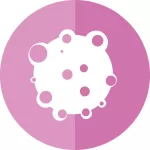Groundbreaking research offers hope for organ transplants and drug testing
A groundbreaking study has unveiled the potential of utilizing 3D ice printing to engineer structures resembling blood vessels, marking a significant leap forward in the field of tissue engineering. Led by researchers at Carnegie Mellon University in the United States, the innovative approach aims to address the critical need for functional blood vessel networks in artificial organs, vital for their viability and efficacy.
Unlike conventional 3D printing methods, which often result in layered structures, the newly developed technique maintains a continuous flow of liquid water during printing, ensuring exceptionally smooth structures. Feimo Yang, a graduate student involved in the research, elaborated on the process, emphasizing its distinctiveness and superior outcomes compared to traditional methods.
“This continuous process, which is what we call freeform, helps us to get a very smooth structure. We don’t have a layering effect typical with many 3D printing,” Yang explained.
The study leverages heavy water, a form of water with a higher freezing point, to facilitate the creation of intricate and realistic blood vessel channels. These 3D-printed ice templates are embedded in a gelatin material, GelMA, which solidifies upon exposure to UV light. Subsequently, the ice melts away, leaving behind meticulously crafted blood vessel networks.
A key breakthrough of the research is the successful integration of endothelial cells, akin to those found in natural blood vessels, into the fabricated structures. Remarkably, these cells exhibited viability on the gelatin for up to two weeks, showcasing the potential for long-term functionality.
The implications of this innovation extend beyond organ transplantation, with potential applications in drug testing and personalized medicine. 3D printed blood vessels offer a platform for assessing the effects of drugs on vascular systems, enabling more accurate and efficient drug development processes. Moreover, the ability to coat these vessels with a patient’s own cells opens avenues for personalized treatment strategies, facilitating precise evaluations of drug responses before administration.
The study represents a significant advancement in tissue engineering, bridging the gap between organ demand and supply. With further refinement and exploration, 3D ice printing holds promise for revolutionizing healthcare by enabling the creation of functional, lifelike artificial organs and facilitating safer, more effective drug development processes.











